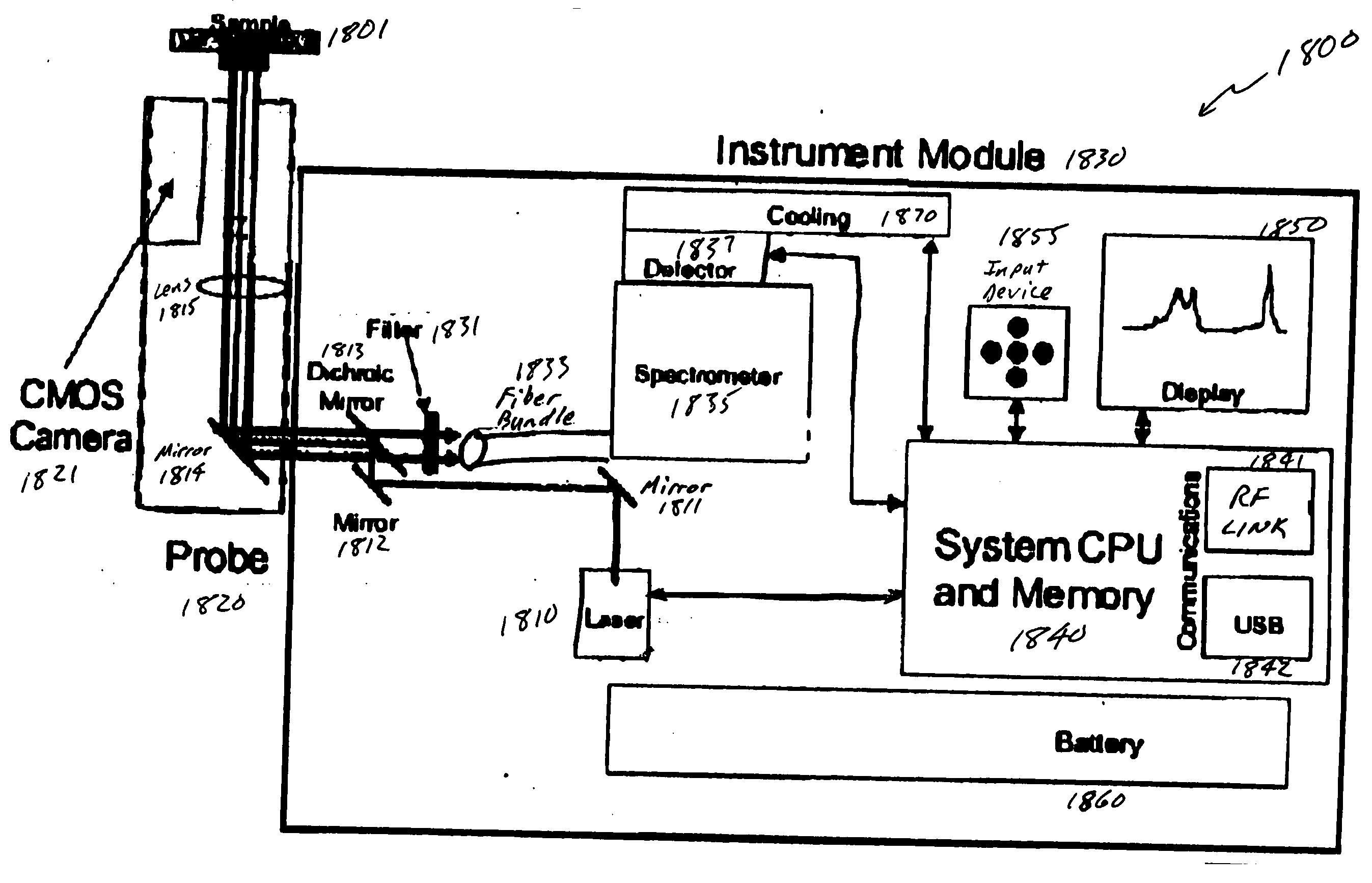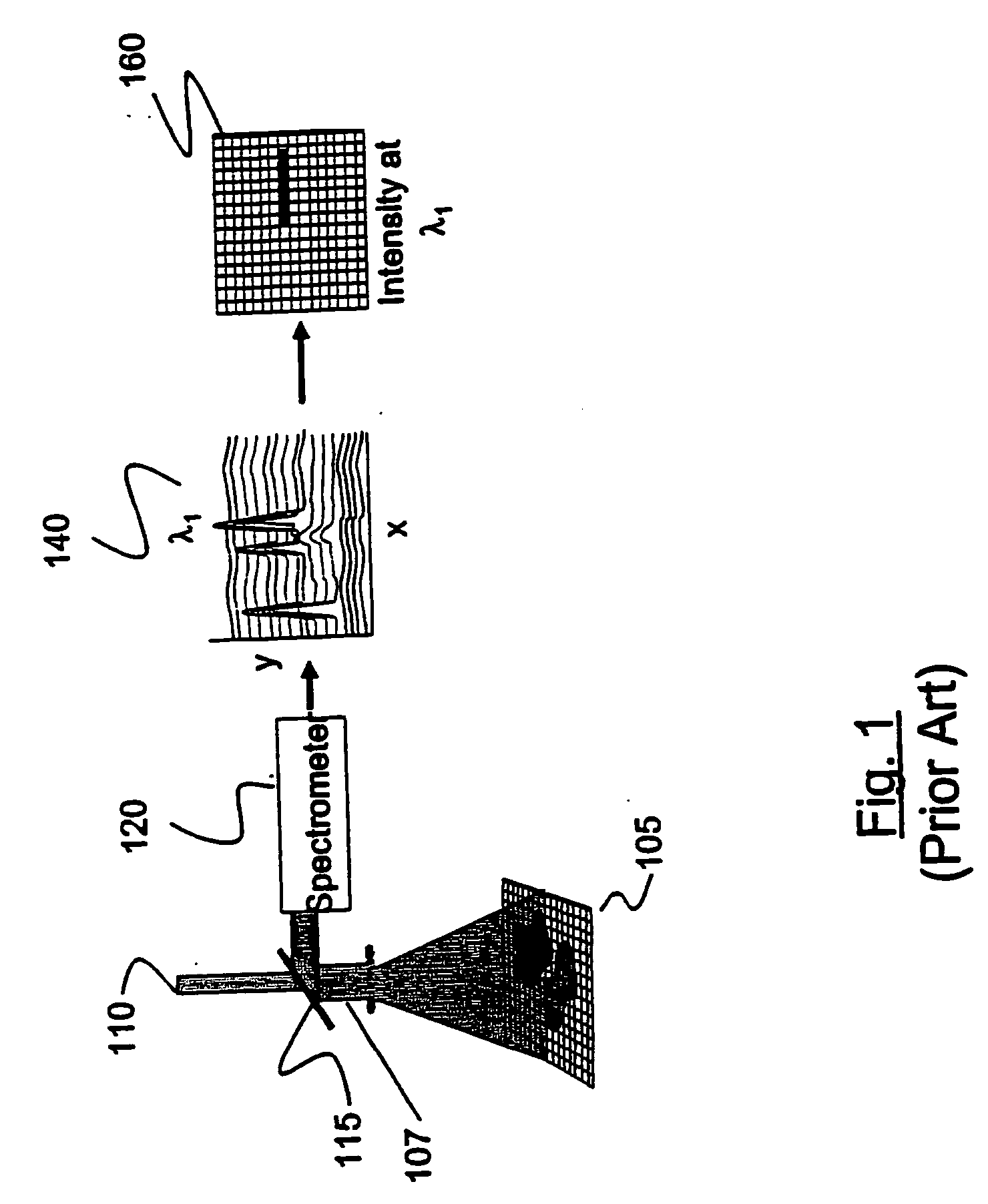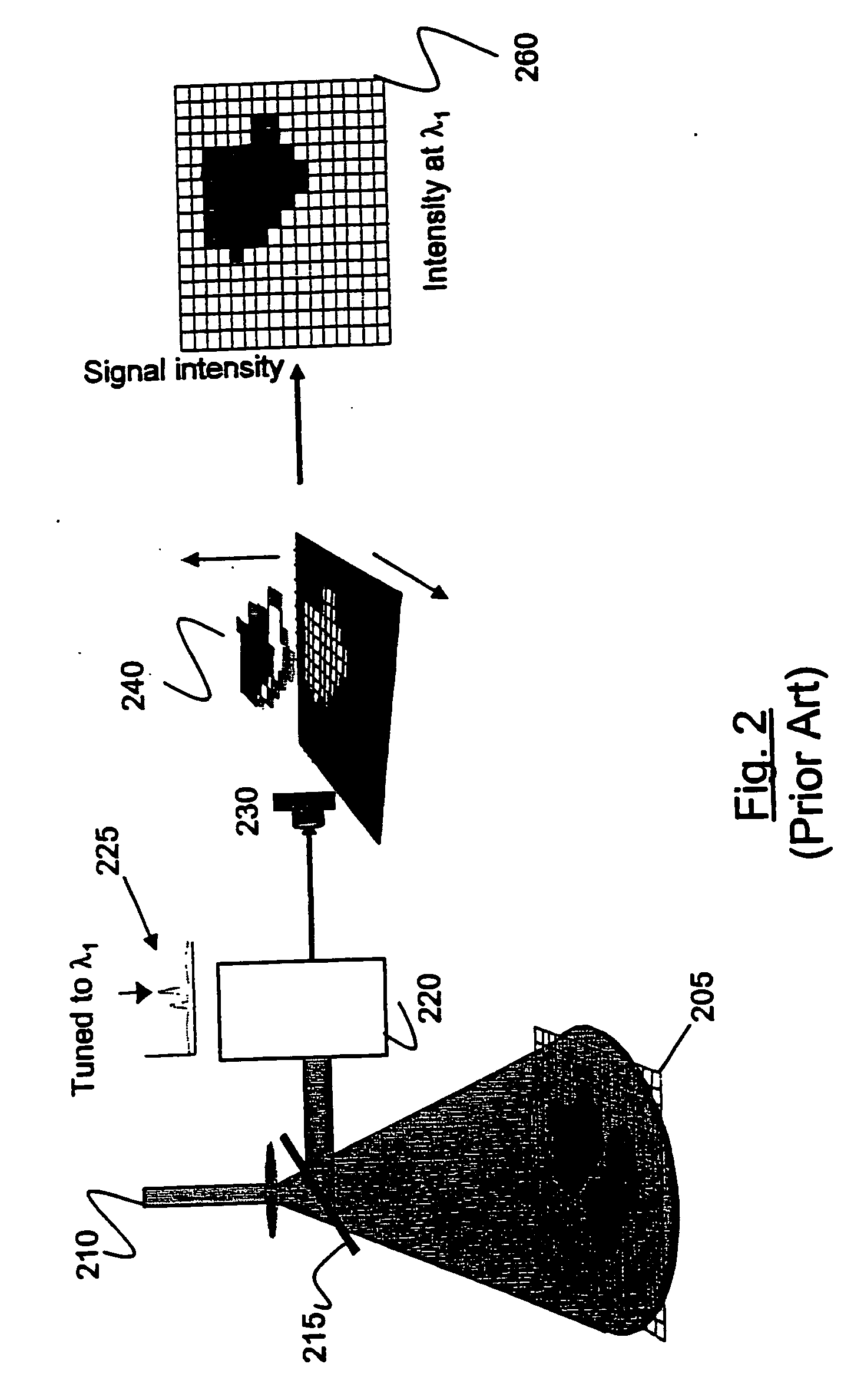System and method for a chemical imaging threat assessor with a probe
a threat assessor and chemical imaging technology, applied in the field of systems and methods for chemical imaging threat assessors with probes, can solve the problems of inability to detect biothreat agents in all three media, inability to meet the desired ease of use and reliability, and inability to carry a single, portable instrument package, etc., to achieve the effect of facilitating sample analysis
- Summary
- Abstract
- Description
- Claims
- Application Information
AI Technical Summary
Benefits of technology
Problems solved by technology
Method used
Image
Examples
Embodiment Construction
[0040]FIG. 1 is a schematic representation of one type of conventional line scan Raman imaging system, in particular a dispersive scan Raman imaging system employing a “pushbroom” scanning arrangement. A sample 105 is illuminated from a source 110, and light energy is reflectively back scattered from the sample and collected at optics 115. The image of the sample is accumulated from successive images at adjacent parallel lines in the image. The image of the sample is obtained for each such line and also at each of a plurality of specific wavelengths in the spectrum. Thus, a line or one-dimensional set of light amplitude values is sampled at a given location X1, Y1, . . . Yn. The light is filtered for specific wavelengths using a spectrometer 120 that functions as a variable wavelength bandpass filter. By advancing from line to line in a “pushbroom” sequence, the successive amplitude values shown graphically at plot 140 are converted to intensity pixel values in an array 160 for a gi...
PUM
| Property | Measurement | Unit |
|---|---|---|
| wavelength | aaaaa | aaaaa |
| wavelength | aaaaa | aaaaa |
| wavelength | aaaaa | aaaaa |
Abstract
Description
Claims
Application Information
 Login to View More
Login to View More - R&D
- Intellectual Property
- Life Sciences
- Materials
- Tech Scout
- Unparalleled Data Quality
- Higher Quality Content
- 60% Fewer Hallucinations
Browse by: Latest US Patents, China's latest patents, Technical Efficacy Thesaurus, Application Domain, Technology Topic, Popular Technical Reports.
© 2025 PatSnap. All rights reserved.Legal|Privacy policy|Modern Slavery Act Transparency Statement|Sitemap|About US| Contact US: help@patsnap.com



